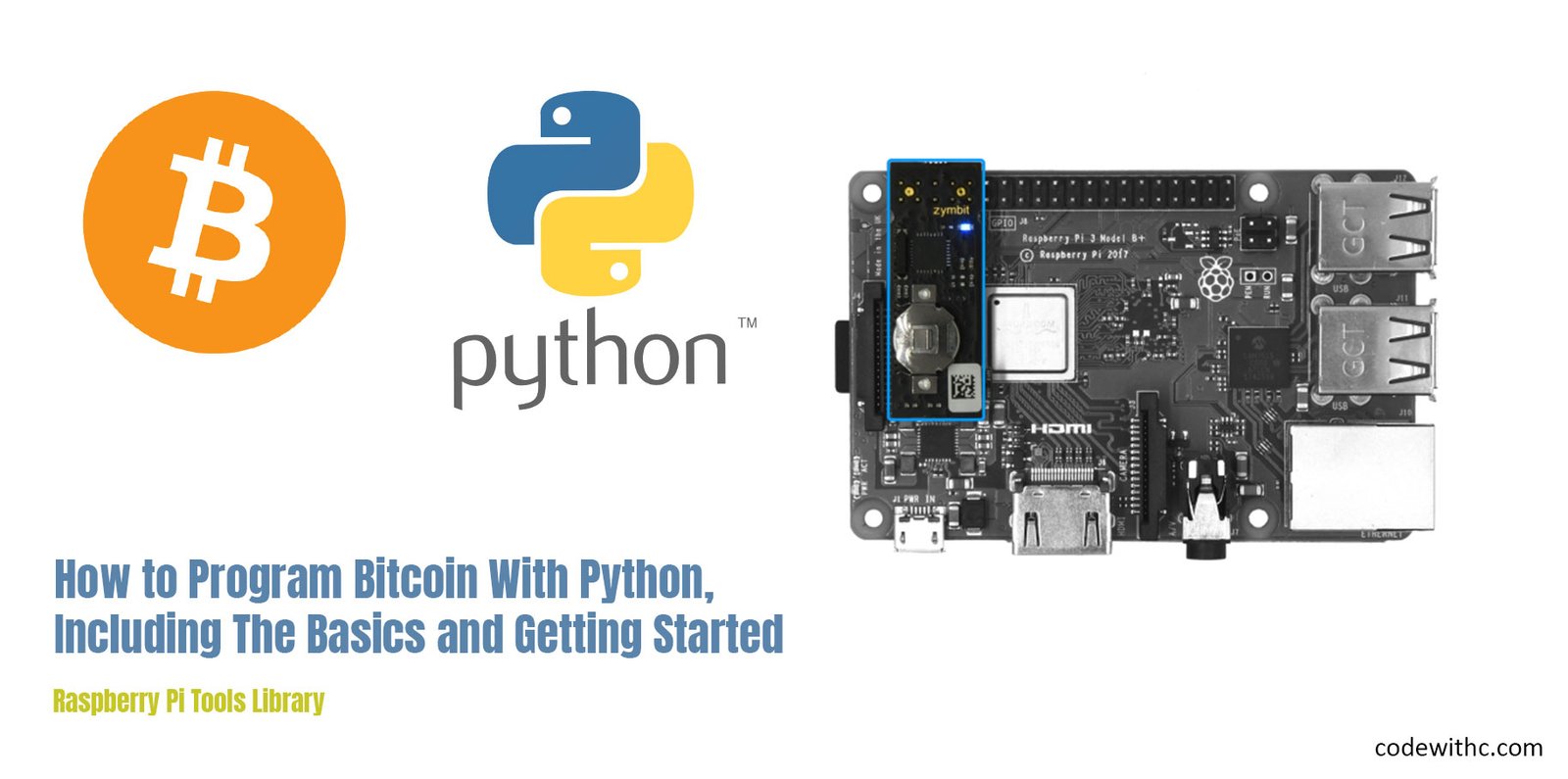In this tutorial you will learn the basics of programming with Python and Bitcoin. You will learn about the Bitcoin Core API, setting up your Python environment, creating a Bitcoin address, signing transactions with the private key, getting and spending Bitcoins. You will also learn about Bitcoin wallets, and some security best practices. If you are completely new to bitcoin, I recommend starting with the first part of this tutorial where we will cover the basic concepts of Bitcoin and what is involved in being a full node. The second part of this tutorial is more advanced and will walk you through the process of using the Raspberry Pi Bitcoin tools library to interact with the Bitcoin network. This part of the tutorial is much more technical but we will cover the most commonly used commands.
Raspberry Pi Tools Library – How to get started with the Raspberry Pi Bitcoin wallet, and other tools
The Raspberry Pi is an inexpensive, credit card-sized computer that can be used to build a wide range of devices. It’s perfect for makers, engineers, and DIY enthusiasts, but it also comes with built-in components such as GPIO, Wi-Fi, and Bluetooth. The Raspberry Pi is a great choice for beginners because it’s very easy to set up. In this article, we’ll guide you through using the Raspberry Pi to make a cryptocurrency wallet. We’ll also walk through some other useful tools you can use to get up and running on the Raspberry Pi.
To install the Pi Bitcoin tools library, open the command-line program and execute the following command:
pip install bitcoin
This library allows you to connect to the Bitcoin network and pull data from places such as Blockchain.info. Let’s start with a Hello World program for Bitcoin in Python. In the hello_bitcoin.py script, the demonstration of a new bitcoin address is created using Python.
Follow the below steps to run the program using python
Import the bitcoin library
#!/usr/bin/env python
'''
Title - Hello Bitcoin Bee
This program demonstrates the creation of - private key, - public key - and a bitcoin address.
'''
# import bitcoin
from bitcoin import *
Generate a private key using the random key function:
my_private_key = random_key()
Display the private key on the screen:
print("Private Key: %s\n" % my_private_key)
Generating Bitcoin Private Keys and Public Keys In 5 Minutes
Here is a list of all the commands you can use to generate bitcoin private and public keys. This guide will walk you through using the command line. Bitcoin private keys and public keys are used to generate addresses, check balances, and sign transactions. The public key, or address, is what people associate with you and they can see all of the transactions you’ve sent and received. Once you know how to generate these keys you can begin sending transactions to others.
We can generate the public keys by using the private key, a public key. Perform bleow step by passing the private key that was generated to the privtopub function.
# Generate Public Key
my_public_key = privtopub(my_private_key)
print("Public Key: %s\n" % my_public_key)
Now with the public key, we can generate a bitcoin address. You can do this by passing the public key that is generated to the pubtoaddr function.
# Create a bitcoin address
my_bitcoin_address = pubtoaddr(my_public_key)
print("Bitcoin Address: %s\n" % my_bitcoin_address)
Steps to Creating a multisignature Bitcoin Address
While it may seem that the process is simple, there is a method to the madness. At the very least, you’ll need the private key to spend the bitcoins. Since we’ve been discussing cold storage, you could use an offline computer to keep the private key safe, but it’s easier just to store it in a wallet. The steps to creating a multisignature Bitcoin address are straightforward, but they take a bit of technical know-how.
This program demonstrates the creation of Multi-signature bitcoin address using Private keys
#!/usr/bin/env python
'''
Title - Create multi-signature address. This program demonstrates the creation of Multi-signature bitcoin address.
'''
# import bitcoin
from bitcoin import *
# Create Private Keys
my_private_key1 = random_key()
my_private_key2 = random_key()
my_private_key3 = random_key()
print("Private Key1: %s" % my_private_key1)
print("Private Key2: %s" % my_private_key2)
print("Private Key3: %s" % my_private_key3)
print('\n')
Create public keys from those private keys using the privtopub function
# Create Public keys
my_public_key1 = privtopub(my_private_key1)
my_public_key2 = privtopub(my_private_key2)
my_public_key3 = privtopub(my_private_key3)
print("Public Key1: %s" % my_public_key1)
print("Public Key2: %s" % my_public_key2)
print("Public Key3: %s" % my_public_key3)
print('\n')
After generating the public keys, create the multisig by passing the three public keys to the mk_ multi-sig_script function. The resulting multisig is passed to the addr_script function to create the multisignature bitcoin address.
# Create Multi-signature address
my_multi_sig = mk_multisig_script(my_private_key1, my_private_key2, my_private_key3, 2,3)
my_multi_address = scriptaddr(my_multi_sig)
print("Multi signature address: %s" % my_multi_address)
Now you can Print The Multisignature Address And Execute The Script
In this tutorial, we learned how to create a bitcoin wallet, and how to generate a bitcoin address and a multisignature bitcoin address using the Raspberry Pi tools library. The private key must be kept in a secure place and away from the internet to ensure that you never lose access.
